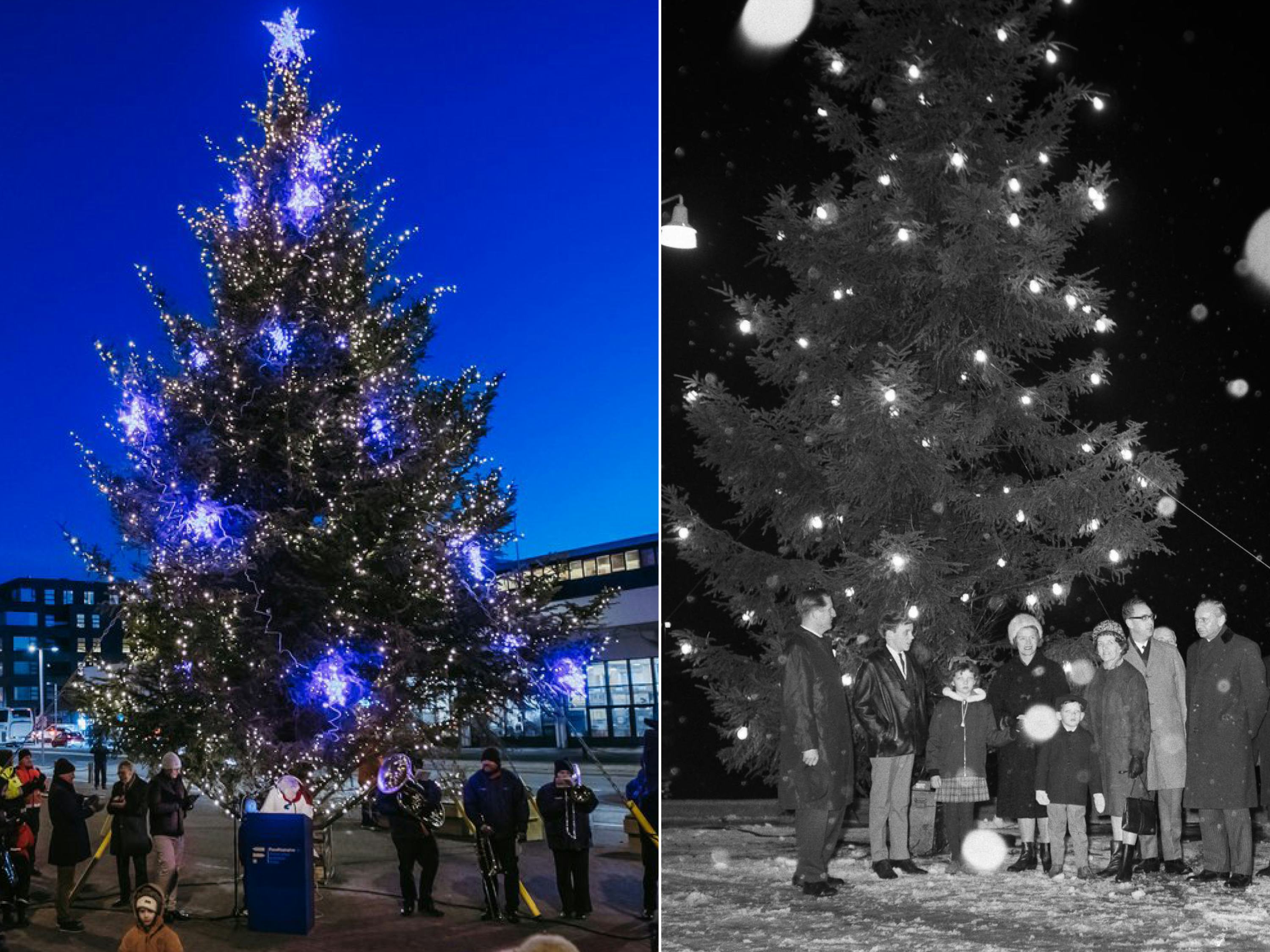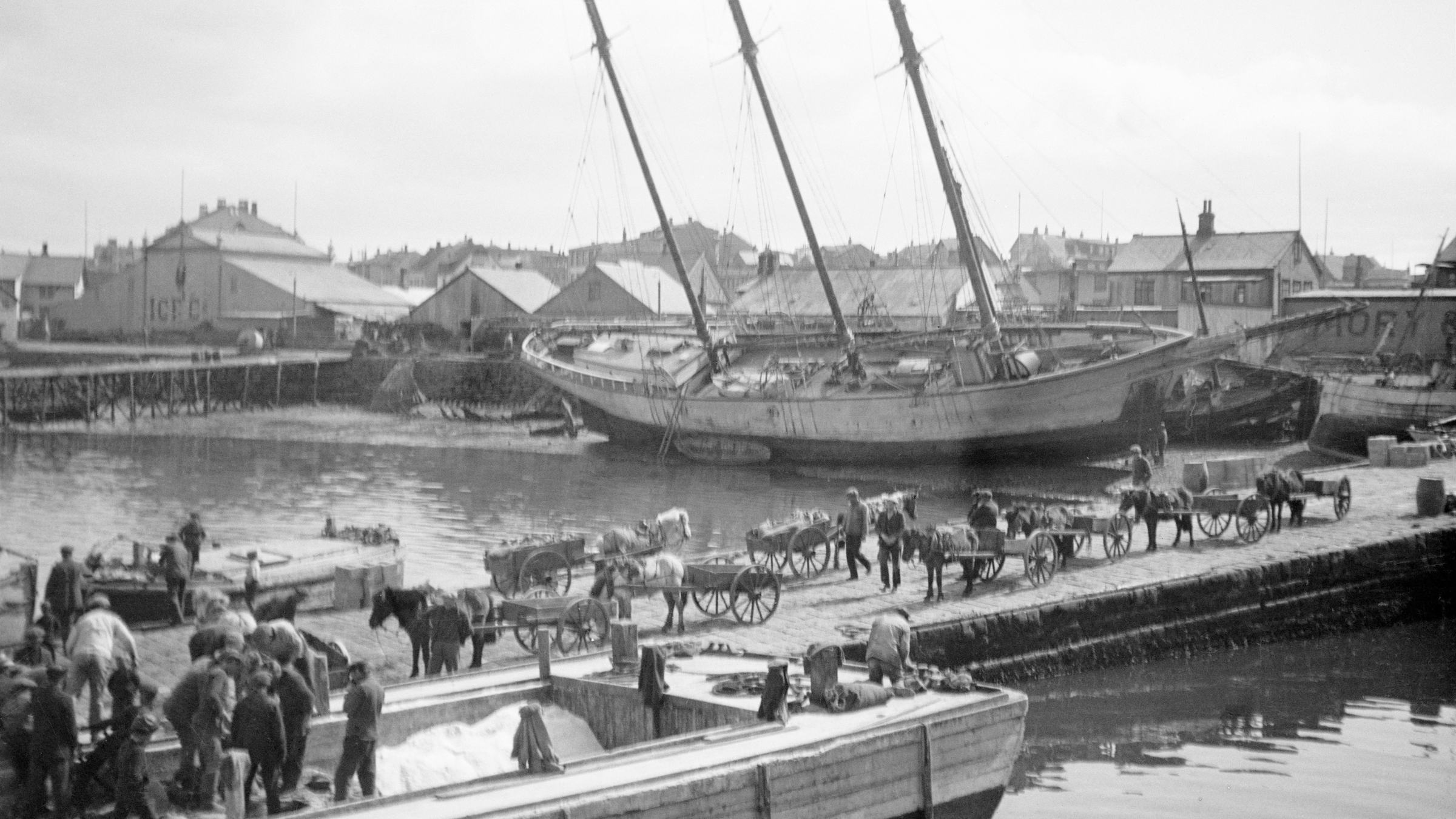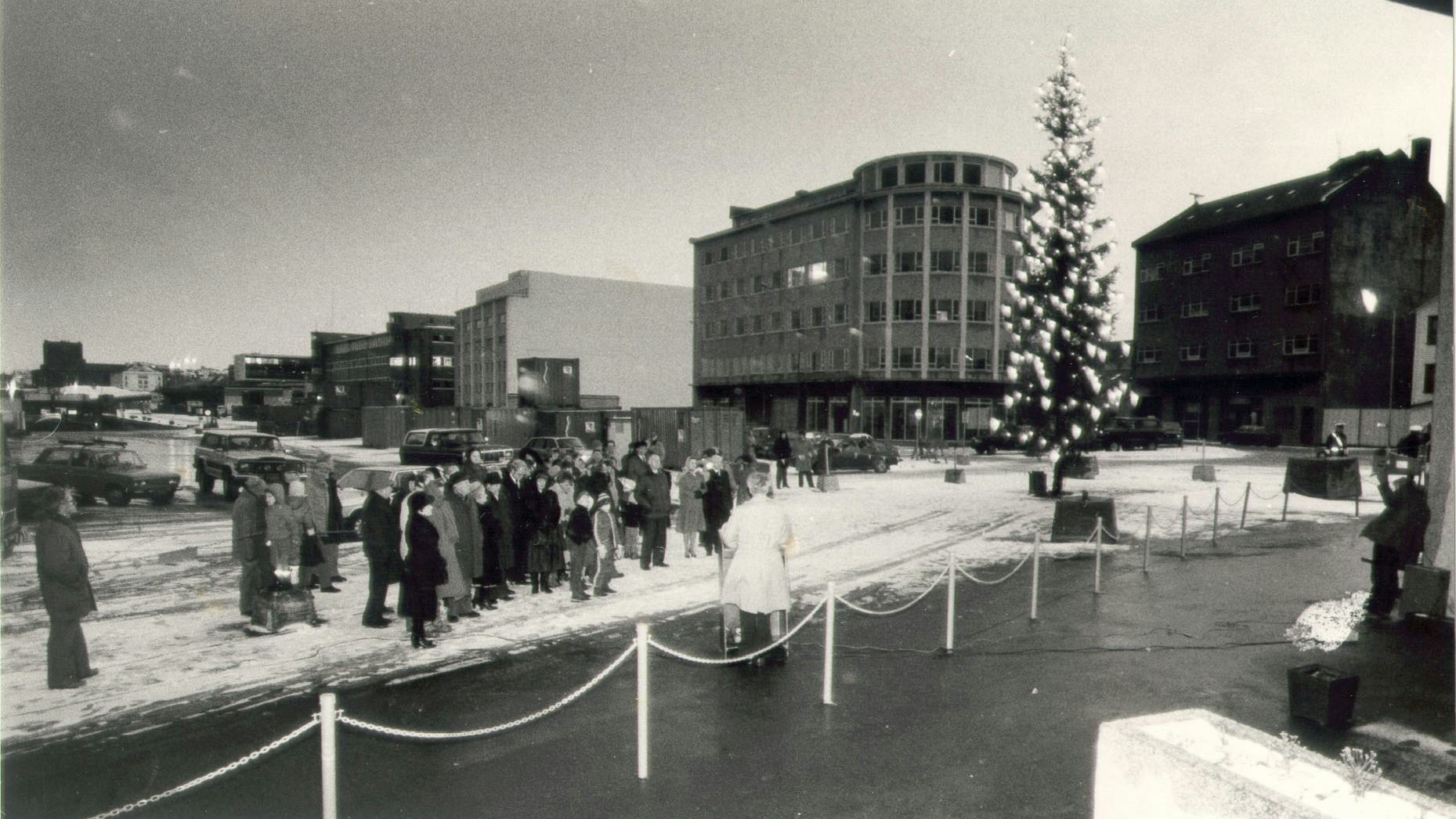On 14 December 1965, an item appeared in the newspaper Tíminn entitled “Who is getting a 12 metre Christmas tree from Hamburg?” The article went on to state that “newspapers and broadcasters in Hamburg have decided to give the people of Reykjavík a giant Christmas tree”, harvested close to Hamburg. The main focus of the article was on a misunderstanding caused by language barriers which caused uncertainty about the intended recipient of the tree: the City of Reykjavík or Reykjavík Harbour.
Clarification quickly followed. On 21 December, the tree arrived in Iceland along with information about the giver, the Hamburg Journalist Association. Professor Samhaber, a representative of the Association, accompanied the tree this first year and announced that it was intended to commemorate the frequent communication between Hamburg and Reykjavík. The tree was should give sailors and fishermen something beautiful to look at in Reykjavík harbour.
Thankful for fish soup in difficult times
It’s possible that WWII was still a sensitive subject at this time, because contrary to the first news articles about the Hamburg tree, it wasn’t only the frequent communication between the two city harbours that occasioned the gift.
In the first years following the end of WWII, there was great poverty and unemployment in Germany. When vessels from overseas docked in Hamburg, people gathered at the Elbe port. Icelandic fishermen who sailed with their catch to Hamburg and saw the conditions began cooking up a great kettle of fish soup for the hungry onlookers - people queued up, thankful for the nourishing meal. The gift of the tree is much more due to this generous gesture.

The holiday spirit descends at the lighting of the Hamburg tree, both in December 1986 and November 2024. The 1968 photo is by Ari Kárason.
The Hamburg Christmas tree became an annual fixture at the busy harbour, the business centre of a growing economy. It never took up much space, literally or figuratively. A search for news about the tree in recent decades results in only a few short bulletin-style items about its lights being lit. Sometimes there will be photos of a small but well-turned out group of people representing the port authorities, the German embassy and Wikingerrunde, an association of former seamen, journalists and business owners in Hamburg, who took over the tradition of sending the tree each year.
The world changed around the tree
Reykjavík harbour was for a long time Iceland’s most important connection with the outer world. Ships would arrive with essential and luxury wares, equipment that supported industrialisation, newspapers and literature that educated the nation and allowed it to follow events in the wider world. It was at Reykjavík harbour that the nation welcomed loved ones, foreign dignitaries, their Nobel laureate and celebrated the return of the saga manuscripts.
The history of how the port developed reflects the development of Reykjavík City. With a growing population and enormous societal changes in the 20th century, activity only increased and likely peaked in the sixties, when Reykjavík had become a city, albeit small by international standards.
The role of Reykjavík harbour changed quickly in the first years after the initial Hamburg Christmas tree arrived. In the sixties, air travel was taking off - passenger ship Gullfoss made its last voyage in 1972 and international ocean travel was mostly discontinued. In 1968, the first developmental stage of Sundahöfn was completed and sea freight moved to the new and impressive industrial port causing a gradual decline in activity in the old harbour. There was of course still a lot going on in the harbour but the strong connection between the general public and the city with the harbour, which had characterised daily life since Reykjavík was a village, had been severed.
The years passed. Hot-dog cart “Bæjarins bestu” became a stalwart of the city centre, with not much more than parking lots, taxi hubs and the Faxaskáli compound beyond. It’s not unlikely that chauffeurs may have driven by the Hamburg Christmas tree on their way to Vesturbærinn or to Seltjarnarnes, and we can imagine that it sparked some Christmas cheer in passing.

Reykjavík harbour was for a long time a hub of activity and development and the city’s gateway to the world.
Lovely legacy in a new city centre
It wasn’t until after the turn of the century that activity again began to grow in the harbour area. The old fishermen’s sheds were repurposed as shops and services instead of the seafaring business they used to house. In the east harbour, the foundations were laid for a new concert and conference centre. Development of the newest part of the city centre began and special emphasis was placed on again making the harbour and the sea accessible to both inhabitants and guests.
Wikingerrunde has been mostly discontinued. For the past few years, the tree hasn’t actually come from Hamburg and is sourced locally. Now, Icelandic companies who operate in and around the old harbour, in association with the German embassy, are carrying on the tradition to ensure that the tree is always in place for Christmas. For the 50 years it was sent from Hamburg to Iceland, Eimskipafélag Íslands transported it free of charge and others participated in maintaining the tradition.
Development of the old harbour is largely finished and the entire region from Örfirisey to Harpa is again teaming with life. The new Reykjavík city centre benefits from inheriting the tradition of a Christmas tree steeped in the history of a passed era, and the holiday spirit of generosity, kindness and gratitude.
“This tree is an important part of my family history. Hreinn Hreinsson, my maternal grandfather, sailed to Hamburg in the port-WWII years. As a young man, he was on one of the ships that invited poor, hungry children on the banks of the Elbe river to come on board for some soup and other food. Grandpa Hreinn later worked out of one of the iconic fishermen’s sheds at the old harbour - last I checked, it was occupied by a jeweller - and a stop at Kaffivagninn was mandatory after trips to check on his handliner. It was during one of those trips at around Christmas that grandpa stopped at the Hamburg tree and told me about the hungry kids and the fish soup. It’s a really clear and important memory for me. I later moved to Hamburg and lived there for eight years. During that time, I learned that this part of history is preserved and cherished there. In the Seamen’s Church on the banks of the Elbe, the story is told and retold at around Christmas, as is the traditional gift of the tree. The generosity of Icelandic fishermen in the years after WWII is fondly remembered.”Agnes Vogler, translator and text technician at Landsbankinn
Top image: The old harbour was mainly an industrial area in the last decades of the past century and visited but little by the general public. The Hamburg Christmas tree nevertheless shone brightly during the holiday season. Photographer: Ólafur K. Magnússon.
This article was first published 29 November 2023 and updated 6 November 2025.

